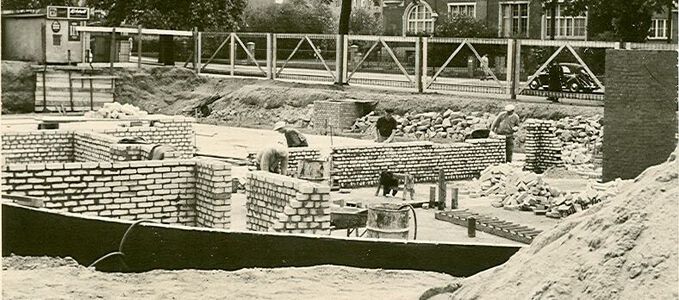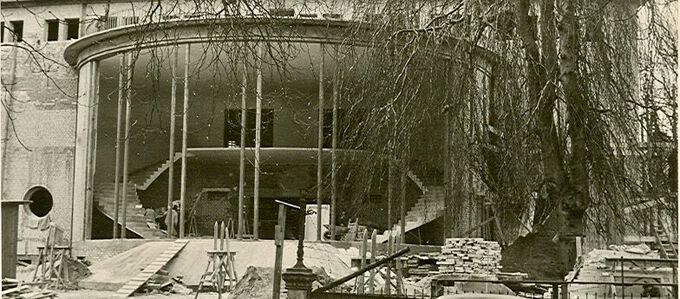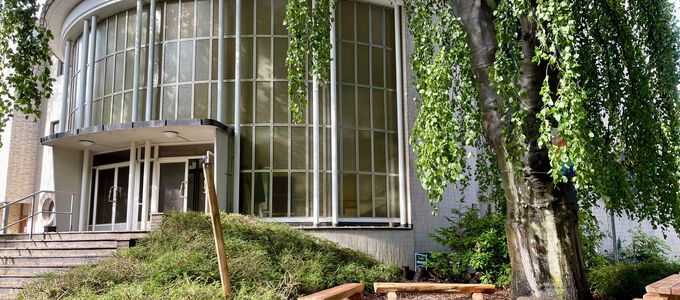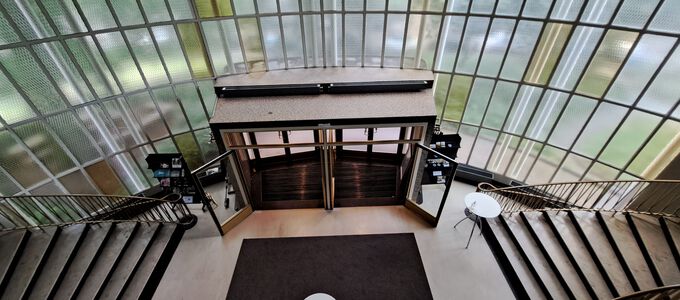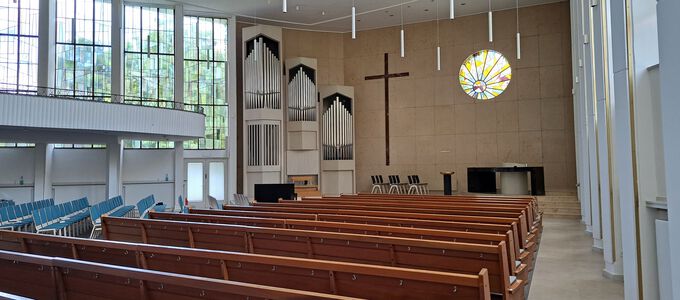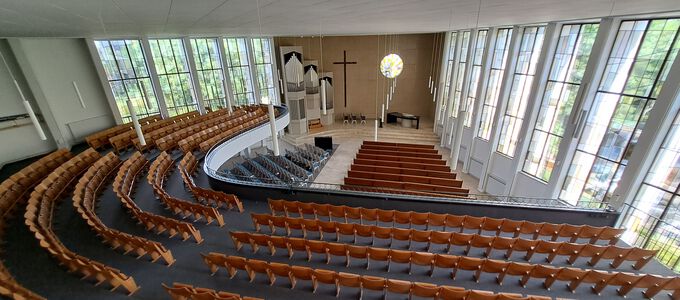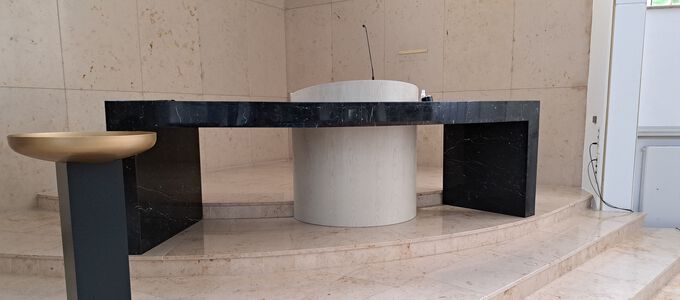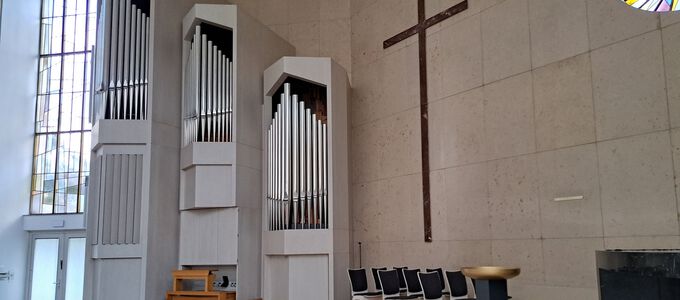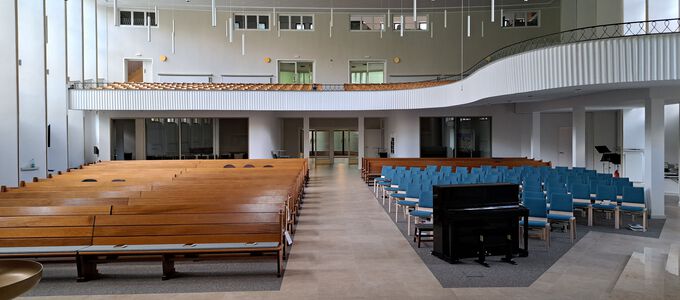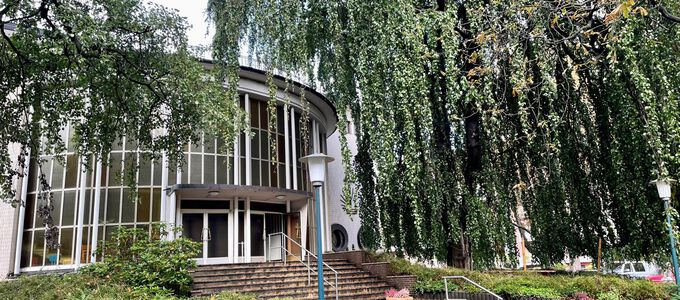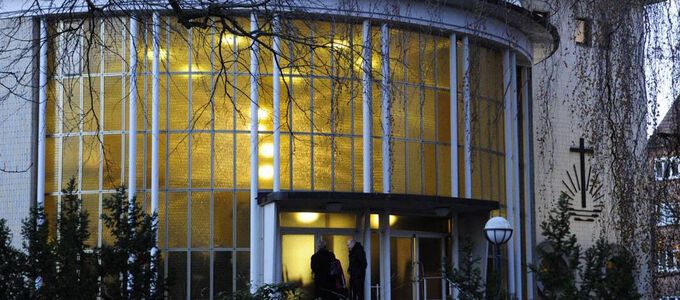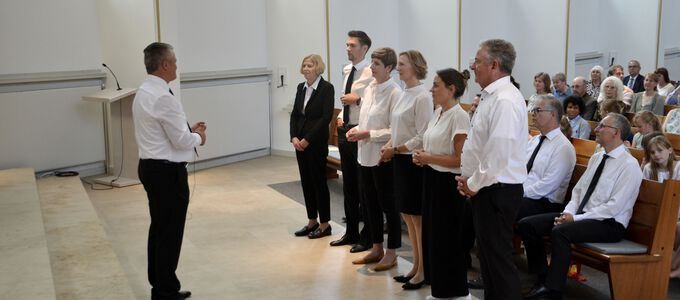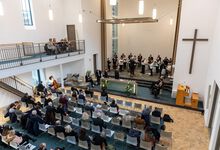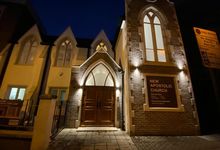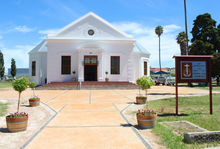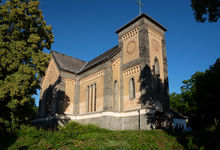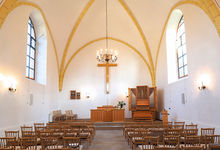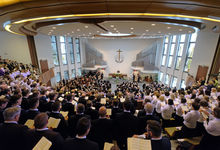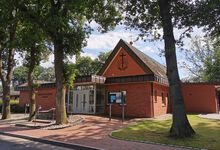A church building with character
It’s official: the building of the New Apostolic Church in Eppendorf is one of the most remarkable buildings in Hamburg, Germany. It has lots of stories to tell, for example, about the new organ, the moving altar, or the little piece of their church that people can carry around.
Even the large weeping beech in front of the entrance has been designated as a heritage tree. Listed buildings are not rare in Germany, and certainly not in a city as historically rich as Hamburg. But it is unusual for the tree in front of the building to be protected as well. Anyone who visits the grounds and the church of the New Apostolic congregation in Eppendorf will understand why.
A natural stone staircase leads up to the elliptical and light-flooded foyer. As you look up you see the double staircase that projects freely into the foyer on both sides of the room. If you follow the steps, you come to the gallery with its curved, slightly asymmetrical shape. And from there your eyes can wander through the main hall of the church.
Living, working, worshipping
The congregation in this part of the city was established at the end of 1922. The premises that had been rented for the congregation around 1932 had become too small by the end of the Second World War. The worshippers stood all the way down the aisle and the children sometimes sat on the steps of the altar or on the wood panelled gas clock behind the altar.
There was a residential building on Abendrothsweg 20 housing the administrative offices of the Church on the ground floor. This is where the new church was to be built, and on the scale of a central church. This was the plan of the then District Apostle Karl Weinmann. He commissioned the architect Theodor Hirte. Construction work began in 1955, and on 28 July 1956, 1150 visitors attended the dedication service.
The mobile altar
These old walls have lots of little stories to tell. For example, the one about relocating the altar. Initially, it was located on the right side of the sanctuary. But the asymmetrical arrangement was perceived as disturbing. So the altar was relocated to the central aisle in the 1960s. But this new block altar needed to be raised so that it could be seen from all the seats. This is what Andreas Herforth, the former assistant rector, reports whose congregation this has been for 65 years.
These old walls have lots of little stories to tell. For example, the one about relocating the altar. Initially, it was located on the right side of the sanctuary. But the asymmetrical arrangement was perceived as disturbing. So the altar was relocated to the central aisle in the 1960s. But this new block altar needed to be raised so that it could be seen from all the seats. This is what Andreas Herforth, the former assistant rector, reports whose congregation this has been for 65 years.
A window to heaven
In the wall behind the altar is a large, round ornamental window symbolising the sun. The members affectionately refer to it as the “window to heaven”. The window is so popular that some brothers and sisters used it as a model and had key rings made and distributed them in the congregation. Those who wish can also buy T-shirts or hoodies featuring the window. This way, members can carry a little piece of the church with them all the time.
A blessing in disguise
And then there is the matter of the pipe organ, which Eppendorf owes to a fire: it was during a special divine service in September 1998 that an overheated ceiling light prevented the ordination of a minister. “There was a short circuit in the ceiling. Then the ceiling began to char. Soon we saw the first flames,” says Andreas Herforth. After five minutes, the whole church was full of smoke.
The ordination had to be postponed. “The fire brigade arrived relatively quickly, but not without first stopping at the wrong church building. The fire was extinguished, but the original organ could not be saved. But there was great joy because the then District Apostle Wilhelm Leber commissioned a new organ by Hüfken. Today, the instrument is known far beyond the walls of the church thanks to public concerts.
This year, the church underwent its latest renovation. Nowadays, official acts can proceed without interruption: there were six ordinations at the reopening service at the end of June.
Article info
Author:
Date:
Keywords:
Katrin Löwen
18.07.2023
church architecture,
churches,
buildings for divine services,
monuments,
dedication/inauguration,
Congregational life


